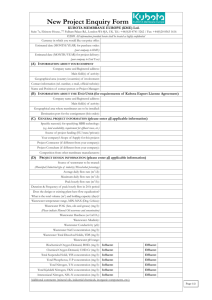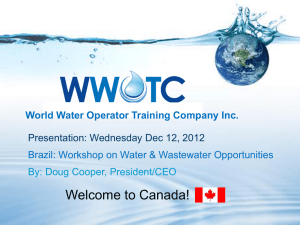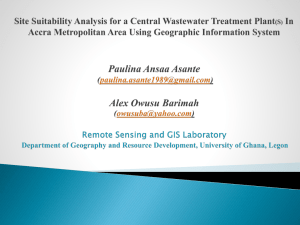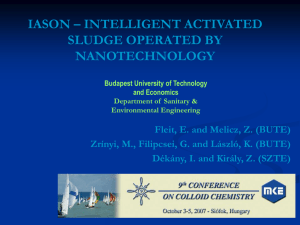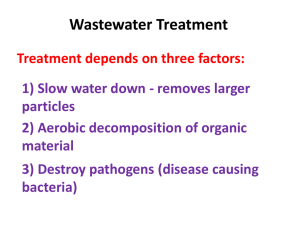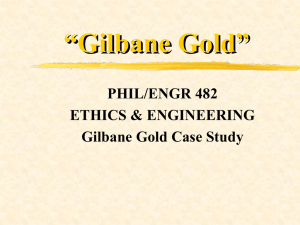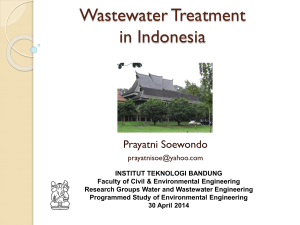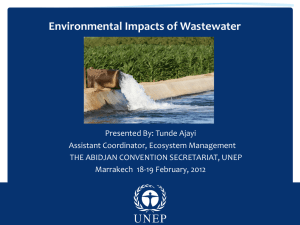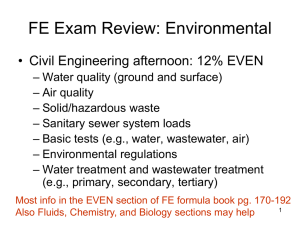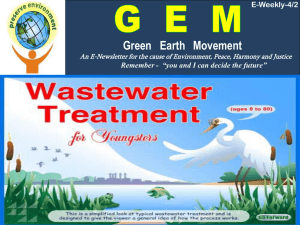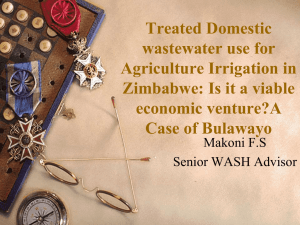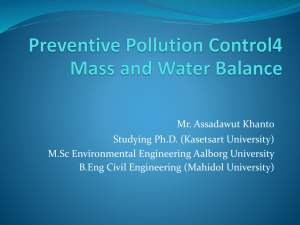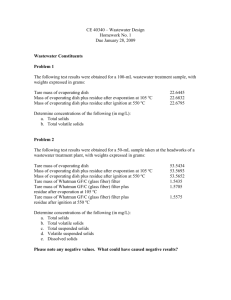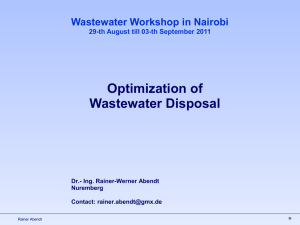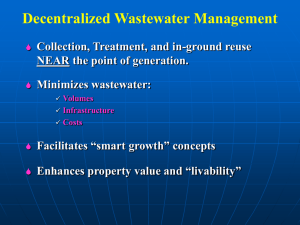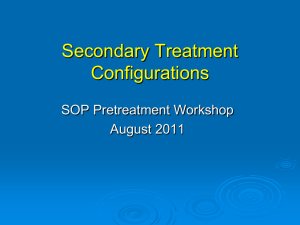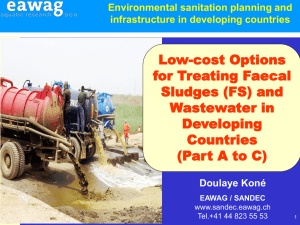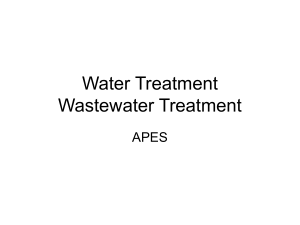PowerPoint - City of London
advertisement
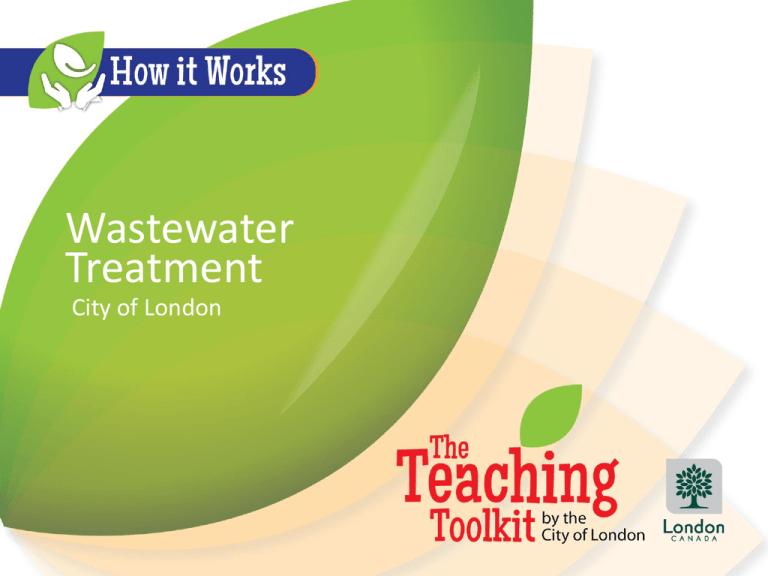
Wastewater Treatment City of London What is Wastewater? • Water used in our communities and businesses leaves as wastewater to be treated and returned to the environment. • All water that is used within the house and goes down a drain. – Toilets, showers, washing machines, sinks, dishwashers, etc. – Industrial, commercial, and institutional waste – What should not be included in wastewater? • There is on average 180 ML/day of wastewater treated. 2 Why do we need to treat it? • Wastewater can contain a variety of contaminants that can be harmful to the environment, humans and animals. • By treating wastewater we can control the spread of water borne diseases. • It also keeps our rivers, lakes and ground water clean and healthy. • The City of London monitors Thames River health to ensure effluent does not have negative impacts. 3 Greenway Lab • Greenway Lab does the tests for all 6 Pollution Control Plants (PCPs) • Test are done at varying intervals at Influent, Effluent and Sludge • Tests Include: – – – – – – – – – – – 4 Biochemical Oxygen Demand Heavy Metal Testing Ammonia Total Phosphorus Total Kjeldahl Nitrogen (TKN) Cations Chloride Nitrate/Nitrite, Sulphate Oil and Grease Solids (Volatile Suspended Solids, VSS and Volatile Total Solids, VTS) Total Coliforms and E. coli pH Wastewater Operations: Background Pollution Control City ofPlant London has • The 6 Pollution Control Adelaide Plants (PCP’s): – – – – – – – 5 Greenway Greenway: 1901 Oxford Vauxhall: 1916 Pottersburg Pottersburg: 1956 Southland Adelaide: 1958 Vauxhall Oxford: 1960 Lambeth: 1963 Future: Southside Capacity (Cubic Metres per Day) Actual Flow 2012 (Cubic Metres per day) 36,400 23,400 152,175 115,200 17,250 9,000 39,100 23,500 564 258 20,900 14,900 Regulations • The Ontario Ministry of the Environment regulates more than 470 wastewater treatment plants owned my municipal governments. • Wastewater Treatment is regulated under the Ontario Water Resources Act (OWRA) which falls under the Ministry of the Environment. • What does it regulate? – Effluent Quality – Reporting Requirements – Effluent sampling and monitoring 6 The System 7 8 Step 1: Moving Wastewater to a PCP Pumping stations and gravity sewers move wastewater to PCPs around the City. Raw sewage (seen above) is usually >95% water. 9 Step 2: Inlet Works and Coarse Screens As collected the wastewater enters the PCP it The solids removed in the screening process are and sent to the landfill. flows through steel screens with 25 mm openings. This removes larger material including: - Paper - Plastic - Leaves - Sticks 10 Step 3: Grit Removal Heavier inorganic solids are removed using the vortex system. 11 Step 4: Primary Clarifier These units are designed to allow organic solids to settle out by gravity. The grease forms a scum which is skimmed from the surface of the tanks. Larger organic solids are settling out of the wastewater. 12 Step 5: Aeration Tanks The wastewater is now treated through a biological process to stabilize the dissolved and finely suspended impurities. This is an activated sludge processes and involves the use of bacteria and microscopic organisms. 13 Wastewater during Aeration 14 Step 6: Secondary Treatment (Final Clarifiers) 15 Sludge Collected from Secondary Treatment 16 Step 7: Disinfection 17 Final Effluent 18 Step 8: Sludge Disposal 19 Raw Sludge Sludge from the primary settling tank Centrifuges 20 The Final Effluent • Technology is excellent in allowing only minute traces of many substances to be found in the final effluent. • We need to be aware that what we put down the drain may make its way back into the environment and possible back into our drinking water. • Research shows that these products can remain in wastewater effluent: – – – – 21 Personal Care Products Estrogen Sugars Pharmaceuticals Link to Population • Wastewater generation will increase as population increases. • In London, the surcharge for wastewater is based on water consumption. 22



